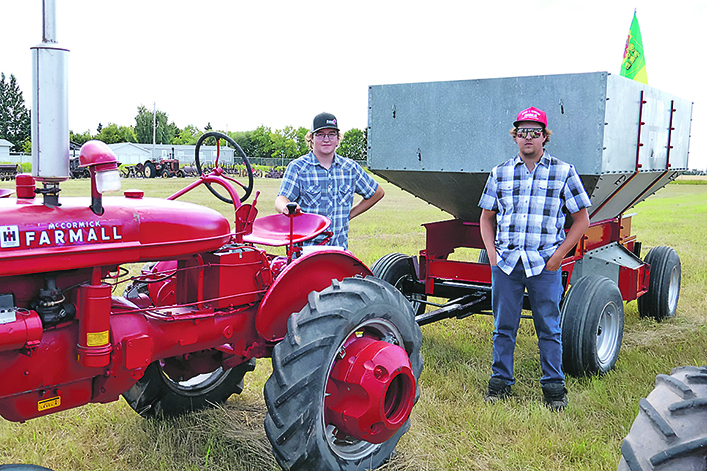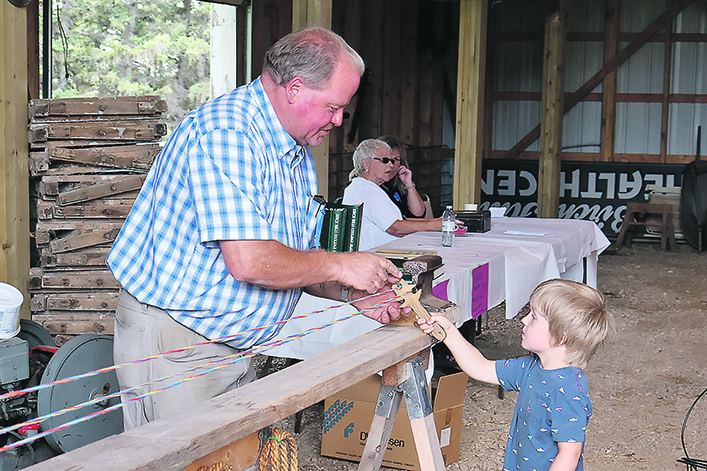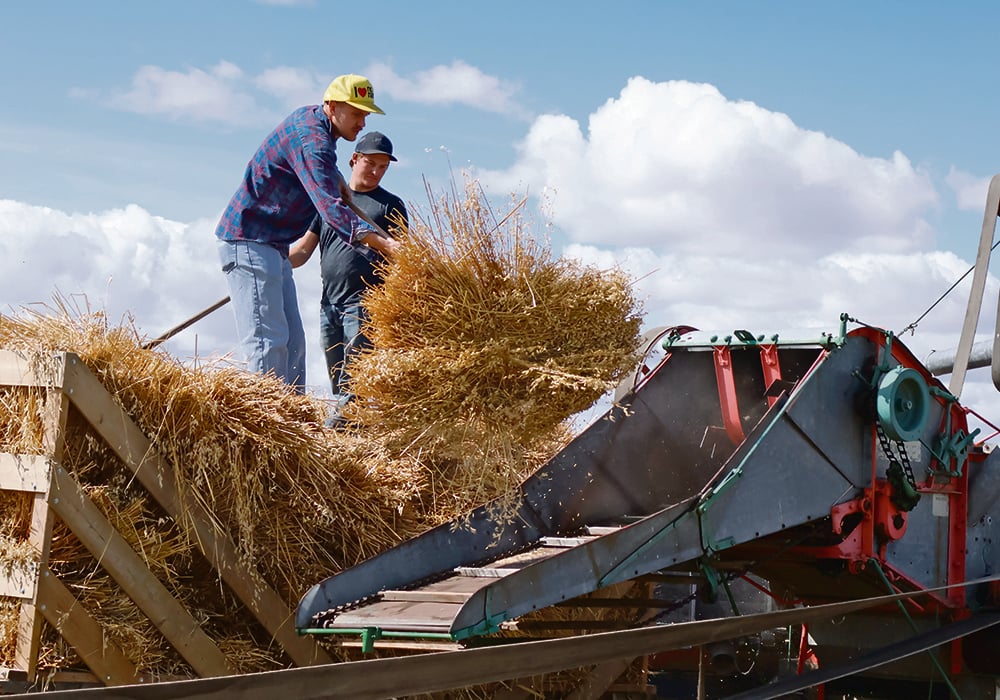Younger members make it easier for the Birch Hills and District Historical Society to hold its annual Threshing Day event
Birch Hills was alive with history Aug. 13 as the 24th annual Threshing Day took people back in time to the turn of the century in Saskatchewan.
Old tractors and machines were on display with a barbecue, trades demonstrations, and fiddle music.
After 24 years of events, with a small break during the COVID-19 pandemic, the current president of the Birch Hills and District Historical Society, Duane Mohn, said it is difficult to celebrate the heritage of a community that is constantly changing without having more young people taking the reins.
At 78 years old, Mohn said he considers himself one of the “youngsters around the organization.”
However, with Eryn Kernaleguen and Courtney Evans, two new faces in their 20s and 30s, joining the board last year, Mohn said it has got the new life it needed.
“It just adds a spark because we’ve got new blood, new ideas, and it really gets us going again.”
With so many small community historical societies folding from lack of interest, Mohn said they are hoping to avoid that with the innovative ideas coming from the younger generation.
“We want to keep adapting to the program that we have so that we appeal to the younger as well as those who have the memory of what it used to be, but we really also want to help people understand how change came about.”

For Kernaleguen, she joined the historical society board primarily to help with Threshing Day.
With a 16-month-old son, she wanted him to know how important agriculture is to his family and his community.
“Events that showcase farming and the work that it comes into, the more we can continue that the better for the kids to be able to see that side of it.”
This is her contribution to keeping the event running, she said, let alone running smoothly with new ideas and energy.
Growing up on country fairs at Pine Lake, Alta., with her grandparents and their volunteering spirit, Kernaleguen thought of new things she could introduce to threshing days. A photo contest was one idea and she was given the green light by the board to plan a contest.
Not only has it engaged people in capturing agricultural and community history, but it has pulled people in to cheer on their friends and neighbours, said Kernaleguen.
Besides being tasked as the new blood of the organization, Kernaleguen also sees the experience as an opportunity to learn the ropes of being a part of the board. There is a large gap from her age to the next oldest board member, she said.
“You don’t want to come in and change everything. You just want to build off of what they can do. I just tried to really learn from all of the women so that I can be useful.”

A lot of work goes into these events, said Kernaleguen, especially the people who get the machinery ready for the live demonstrations.
“I’ve learned a lot from all of them, and I think that they deserve a big thank you.”
At 16 and 23 years old, brothers Wyatt and Jackson Evans were excited to show off their McCormick Farmall Super A. Built by International Harvester from 1947 to 1954, Wyatt said there’s few left as they’re more likely being destroyed than restored.
When he bought his machine, it had already been restored and he still uses it to grade his yard.
Unlike newer machinery, Wyatt laughed that his little Super A will still run 50 years from now.
“This is what they used to use. They only farmed one quarter and that’s what they used.”
With Wyatt being in his early 20s, his understanding and appreciation of Saskatchewan’s history gives Mohn cause for excitement.
He said one reason they grabbed two young men to take part in the live threshing demonstration was to bring a greater appreciation of the work that Grandpa did.
“If you don’t understand your heritage, you’re going to lose the benefit of that heritage. If they do (understand), it may evolve into something that’s very wonderful.”















